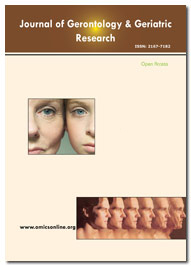インデックス付き
- Jゲートを開く
- Genamics JournalSeek
- セーフティライト付き
- レフシーク
- ハムダード大学
- エブスコ アリゾナ州
- OCLC-WorldCat
- パブロン
- ジュネーブ医学教育研究財団
- ユーロパブ
- Google スカラー
このページをシェアする
ジャーナルチラシ

概要
Active and Healthy Ageing among Scheduled Tribes in India
Sajini B Nair and Thara ET
Active ageing is the key word in any debate on ageing of population around the globe. But research on aging have seldom considered the plight of marginalized groups nor tried to quantify the overall wellbeing of aged among tribal community in India. On this perspective this paper tries to explore the data available on tribal elderly population in an attempt to quantify the active ageing process of the tribal elderly population in India. Scheduled tribes in India have a lesser proportion of aged with 6.9% of the population above 60 years compared to 8.6 among the general population in India. Employing McGahan composite index normalization the composite indices is estimated. The health index values indicate that only one in ten elderly have good health. Community participation index depicts a better scenario with more elderly being scored under the ‘moderate’ and ‘good’ participation index. Distribution of elderly population by security index shows that ‘good’ security index values are observed among the medium wealth quintile category of elderly. Overall the Scheduled Tribe population in India shows a moderate level of active ageing. Females are slightly at disadvantage in the overall active ageing index. Welfare of the tribal elderly population demands attention in par with the general population in promoting active ageing among the tribal elderly population in India. A holistic approach encompassing health, social, economic and psychological aspects could be promoted with strong government support for the active and healthy ageing of the tribal population in India.